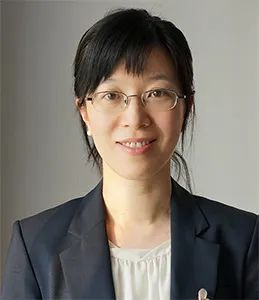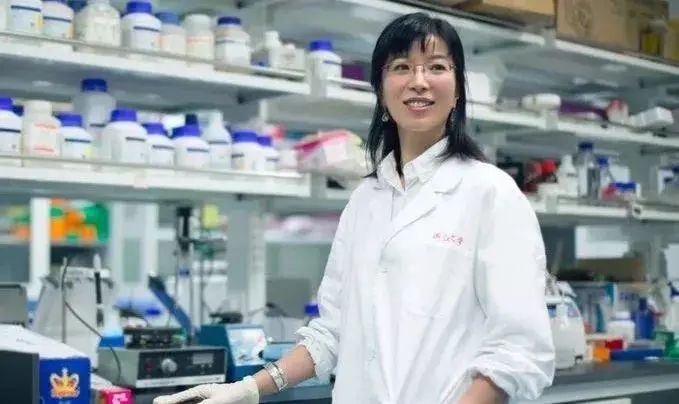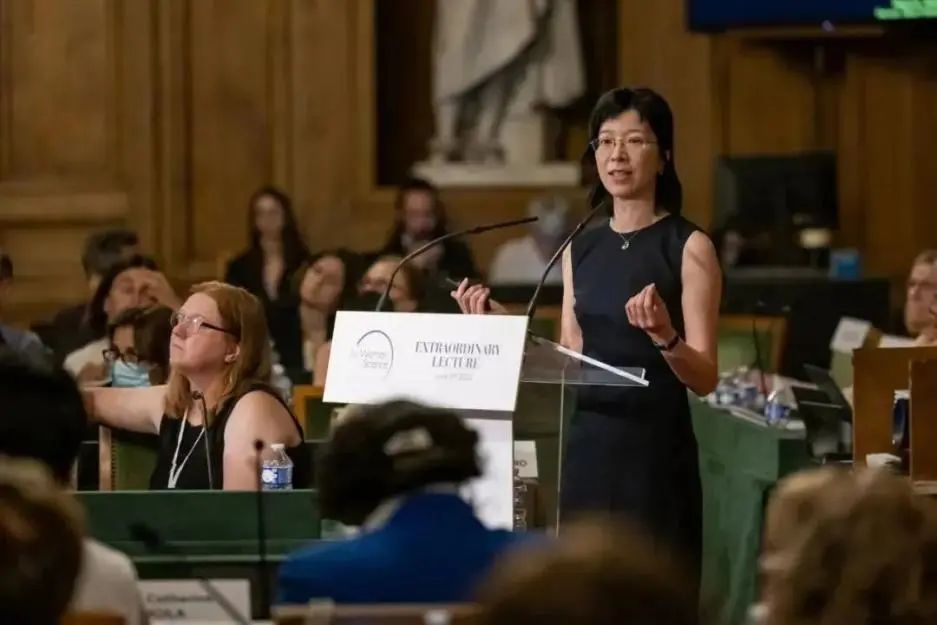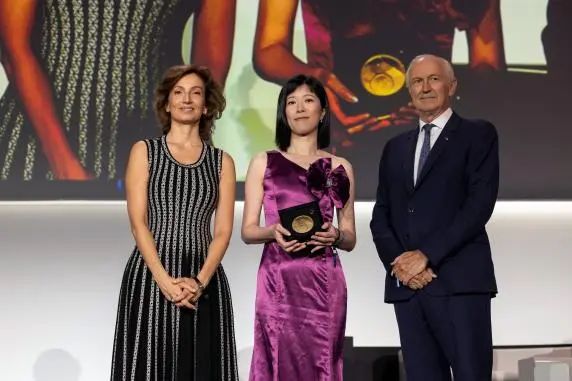
Is the result of 1 Cell, 3 Nature, and 4 Science impressive enough?
There is a female scientist at Zhejiang University who is both beautiful
and talented. Although she may not be well-known to the public, those who know
her grades will praise her as a powerhouse!
She is Professor Hu Hailan, Senior Researcher, Doctoral Supervisor,
Executive Director of the Neuroscience Center at Zhejiang University, and Dean
of the School of Neuroscience and Brain Medicine at Zhejiang University.

Awards received:
2012 National Science Foundation for Distinguished Young Scholars;
2013 Meiji Life Science Outstanding Award;
The 12th China Young Female Scientist Award in 2015;
The 14th China Youth Science and Technology Award, Changjiang Scholar
Distinguished Professor of the Ministry of Education, Young and Middle aged
Science and Technology Innovation Leading Talent, and Tan Jiazhen Life Science
Award in 2016;
In 2017, the National "Ten Thousand Talents Program" awarded the "Zhenxi
Scholar" award in 2018, and the Ministry of Science and Technology recognized
the "Top Ten Scientific Advances in China";
2019 IBRO Kemali Neuroscience International Award and Ho Leung Ho Lee
Foundation Science and Technology Progress Award from the International Brain
Research Organization;
The 2nd National Innovation Excellence Award in 2020 and the honorary title
of "National March 8th Red Flag Bearer" in 2019; 2021 UNESCO World Outstanding
Women Scientists Award
Other people's children
Hu Hailan has been a 'child of someone else's family' since childhood. She
attended Hangzhou No.2 High School in high school and was admitted to the
Biology Department of Peking University in her senior year due to excellent
grades.
After completing his undergraduate studies in the Department of Biology at
Peking University in 1996, he went to the University of California, Berkeley in
the United States to pursue a doctoral degree in neurobiology under the guidance
of Dr. Corey Goodman. During this period, he demonstrated a strong interest and
outstanding talent in neuroscience.
So after graduating with her PhD, she joined Dr. Julius Zhu's laboratory at
the University of Virginia in the United States for postdoctoral research. In
2004, she transferred to Cold Spring Harbor Laboratory in the United States
(known as the "cradle of molecular biology") to continue her postdoctoral
research, further deepening her professional knowledge and skills in the field
of neuroscience.

In December 2008, Hu Hailan decided to return to China and join the
Institute of Neuroscience of the Chinese Academy of Sciences as the head of the
research group on neural circuits and behavioral plasticity, and also became a
member of the "Hundred Talents Program" of the Chinese Academy of Sciences. In
May 2015, I transferred to Zhejiang University and have been employed by both
the Qiu Shi Advanced Research Institute and the Neuroscience Research Center of
the School of Medicine at Zhejiang University. I have been in this position ever
since.
For many years, Hu Hailan has focused on the study of advanced brain
functions and related diseases, discovering the brain mechanism of the "winner
effect" in social competition, and revealing that postnatal experience can
change innate weakness by reshaping neural circuits; A new interpretation of the
causes of depression has been proposed from multiple levels such as molecules,
cells, and systems, providing new ideas for the development of better and safer
antidepressant drugs. Her work not only enriches human understanding of brain
function, but also provides new ideas and methods for the treatment of related
diseases.
Three nominations, or the next academician?
Professor Hu Hailan's ability to win the title of Outstanding Youth within
three years of returning to China should not be underestimated. In 2019, she was
awarded the 12th IBRO Kemali International Prize, becoming the first Asian
scientist to receive this honor. This award is presented every two years to
recognize scientists under the age of 45 who have made outstanding contributions
in the fields of basic and clinical neuroscience worldwide. In previous awards,
it was largely monopolized by scientists from Europe and the Americas. After the
announcement of the award, People's Daily praised Hu Hailan as the "number one
person in Asia! Double explosive in strength and appearance".

Subsequently, in 2021, Professor Hu Hailan was awarded the "World
Outstanding Female Scientist Achievement Award" jointly established by UNESCO
and L'Oreal Group of France.
It is worth noting that the previous six Chinese winners were all
academicians, including Yan Ning, the winner in 2024, who was elected as an
academician of the CAS Member the previous year.
Professor Hu Hailan's achievement further consolidates her position in the
international scientific community, and many people are speculating that
Professor Hu Hailan should have a good chance of being elected as a new
academician.

This year's top issue has been released again
Recently, Professor Hu Hailan's team from Zhejiang University published an
article titled "Neuron astrocyte Coupling in Lateral Habenula Mediates
Depressive like Behaviors" on the preprint platform bioRxiv. This study delves
into the interactions between neurons and astrocytes in the lateral habenula
nucleus and how they couple to affect depressive like behavior.
Research content:
This study used free moving mouse multi brain area calcium imaging
recording technology and found that stress can induce unique bimodal responses
in LHb neurons and rapid responses in astrocytes. The calcium signaling of LHb
astrocytes is dependent on alpha 1A adrenergic receptors and is associated with
the circulating neural network between LHb and locus coeruleus (LC). Through the
use of glial neurotransmitters glutamate and ATP/adenosine, LHb astrocytes
mediate the second wave activation of local LHb neurons and the release of
norepinephrine (NE). Activation or inhibition of calcium signaling in LHb
astrocytes can promote or prevent stress-induced depressive like behavior,
respectively.
These results confirm the stress induced positive feedback loop of the LHb
LC axis, in which astrocytes are a key signaling link. The discovery of this
significant neuron glial cell interaction may provide a new perspective for
stress management and prevention of depression.
Science (IF=44.7)
On August 9, 2024, Hu Hailan's team published an article titled "Brain
Region Specific Action of Ketamine as a Rapid" in the top journal Science,
further elaborating on the antidepressant mechanism of ketamine.
Research content:
This study found that ketamine, as an NMDAR dependent open channel blocker,
has specificity in its main area of action and antidepressant effect. In a
depression like mouse model, ketamine can rapidly inhibit NMDAR currents in the
"anti reward center" of the brain - the lateral habenular nucleus (LHb) neurons,
while hippocampal CA1 neurons are not affected. Local knockout of the NMDAR
subunit NR1 of LHb can block the antidepressant effect of ketamine and the
resulting increase in hippocampal serotonin and brain-derived neurotrophic
factor levels.
Therefore, ketamine exerts its effects by targeting specific brain regions
and NMDAR in depressive states, with LHb being its main target. The persistence
of neural activity and the size of the postsynaptic NMDAR reserve pool jointly
determine this region specific effect. This study contributes to a more
comprehensive understanding of the antidepressant mechanism of ketamine and
provides a basis for designing more precise and effective treatment methods for
depression.
It is reported that Professor Hu Hailan has been nominated for the position
of academician of the Chinese Academy of Sciences multiple times. Perhaps there
will be good news soon?
Her team is also very awesome. Previously, a student asked, "Do each of
your direct PhD graduates have a CNS?" She confidently responded, "So far, I
have supervised five direct PhD graduates, and they have all successfully
published a Science paper with the first author or co first author
authorship